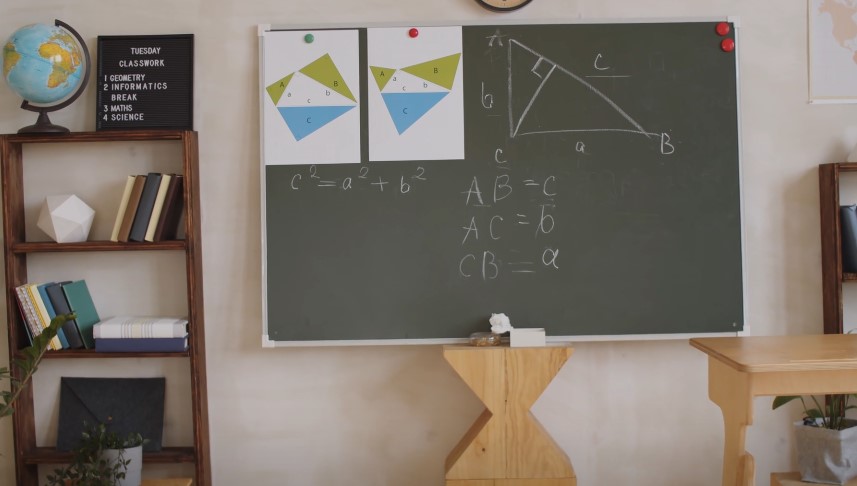
Share Post:
Math anxiety refers to a psychological condition marked by intense fear and stress during mathematical tasks. It affects students of all ages and can become a major barrier to academic growth. Many learners avoid math-related subjects entirely due to early negative experiences.
Significance lies in its long-term impact on student confidence, academic choices, and professional pathways, particularly in STEM. Regular and structured practice plays a critical role in reversing the damage by gradually building self-trust and reducing panic responses.
Through consistent effort, students not only enhance their skills but also reshape how they view math. Confidence grows, anxiety fades, and competence takes root.
Table of Contents
ToggleThe Role of Regular Practice
Building math confidence doesn’t happen in a single session. It evolves through steady, focused effort over time. Repetition allows familiarity to replace fear. Concepts that once seemed impossible begin to make sense with ongoing exposure.
Students who commit to regular practice experience a noticeable shift, not only in their skills but also in how they perceive math.
Anxiety fades when preparation becomes a habit. Practice plays several roles in this transformation, which can be broken into three major effects explained below.
Desensitization Through Repetition
Routine engagement with math lowers emotional resistance. Tasks that once triggered stress become ordinary through repetition.
Familiarity neutralizes fear. When math becomes part of daily life, students stop bracing for discomfort.
Students benefit most when:
- Practice sessions occur at consistent times.
- Material includes both review and new challenges.
- Exposure to mistakes is normalized as part of growth.
Anxiety feeds on uncertainty. Practice replaces that with reliability. Confidence grows not by avoiding struggle but by walking through it enough times to strip away its power.
Schools and parents that adopt math intervention programs like those you can find at Fusion Academy offer students the structured consistency, which becomes a turning point in reducing fear.
Building Conceptual Foundations

Panic often arises when students lack secure footing. Concepts are stacked on top of each other in math. Missing just one layer causes everything above it to wobble.
Regular drills fill in those gaps. Repetition builds fluency, and fluency invites ease.
Key areas to reinforce include:
- Basic operations (addition, subtraction, multiplication, division)
- Number sense and place value
- Fractions, decimals, and percentages
- Algebraic thinking and logical reasoning
Confusion loses its grip once students see the logic behind problems.
Concepts don’t feel random anymore. Regular practice builds that mental clarity. It turns shaky guesses into informed steps.
Incremental Confidence Gains
Confidence doesn’t arrive all at once. It builds in small steps. Every correctly solved problem delivers a message: “I can do this.”
Each message reshapes how students view themselves in relation to math. Those moments accumulate. They matter.
Benefits of small wins include:
- Improved perseverance when facing harder tasks
- Reduced fear of asking questions in class
- Increased motivation to try instead of shutting down
With regular feedback and support, negative self-perceptions begin to fade. Students stop defining themselves by past struggles.
They begin to see improvement as a pattern—not an accident. Programs focused on daily, attainable goals reinforce this belief with personalized pacing and encouragement.
Strategies for Effective Practice
View this post on Instagram
A post shared by GMAT Focus prep & MBA admissions consulting (@mbahouse)
Regular practice alone does not guarantee progress if the method lacks purpose or structure. Effective practice involves more than repetition, it demands strategy.
Students benefit most when tasks are presented in digestible ways, errors become tools for growth, and engagement is sustained through innovation.
Several practical approaches can transform a bland worksheet into a meaningful learning experience.
Breaking Down Complexity
Complex math problems often intimidate even dedicated learners. A wall of numbers or multi-step equations can cause paralysis, not productivity.
Each part becomes manageable, and the overall task feels less threatening.
Effective scaffolding supports learning in stages. Educators can design exercises that build in difficulty without overwhelming students from the outset.
Instead of one large assignment, a sequence of connected mini-tasks leads to better retention.
Key strategies include:
- Start with a simplified version of the concept before introducing full-scale problems.
- Highlight one skill per section to avoid cognitive overload.
- Use visual aids like number lines, grids, or diagrams to clarify steps.
- Assign checkpoints in multi-step problems to help students pause and verify progress.
Reflection and Personal Editing

Finishing a math problem isn’t the final step, thinking about the process matters just as much.
Students often rush to complete worksheets without reviewing their steps or questioning their solutions. Slowing down to reflect encourages better habits and deeper engagement.
Personal editing teaches accountability. Recognizing patterns in errors allows students to adjust their approach before mistakes become habits.
Confidence increases when they realize how much they can improve through effort and critical thinking.
Effective ways to promote reflection include:
- Ask students to circle where they struggled and explain why.
- Use error-analysis worksheets to dissect incorrect answers.
- Incorporate journal prompts such as: “What did I learn today?” or “What would I do differently next time?”
- Have students teach the corrected version to a peer to reinforce their learning.
Gamification and Interactive Tools
Practice becomes far more productive when students actually want to participate. Dry repetition fades fast in memory, but interactive experiences stay longer.
By turning routine tasks into challenges, puzzles, or competitions, students reframe math as something engaging rather than exhausting.
Digital tools, apps, and low-tech games add variety to daily routines. Rewards, progress tracking, and instant feedback provide students with immediate validation.
Increased motivation leads to increased consistency, which directly supports math fluency.
Suggestions for gamified learning include:
- Use flashcard apps that level up as mastery grows.
- Create classroom leaderboards for solved problems or completed sets.
- Design math “escape room” activities with puzzles to solve.
- Offer small rewards for accuracy streaks or time-based challenges.
The Long-Term Impact of Regular Practice

Regular math practice is more than a short-term academic strategy. Long-lasting effects emerge when students engage consistently with structured problem-solving.
Practice not only enhances grades but also shifts emotional responses and equips learners with life-ready skills.
When students treat math as a habit, rather than a once-a-week panic, they lay the groundwork for academic and personal growth.
Academic Improvements
Consistent practice delivers measurable academic gains. Students who engage daily in math exercises begin to notice improvement in performance and productivity.
Lessons become easier to follow, and tasks feel less overwhelming.
Key academic benefits include:
- Higher test scores due to familiarity with question formats and concepts
- Improved retention of material through repeated exposure
- Better homework completion rates as confidence increases
- More efficient problem-solving as students internalize strategies
Familiarity with math concepts removes much of the mental clutter that causes slow responses or errors.
Practice reduces hesitation, especially under time constraints, which plays a major role in testing environments.
Emotional Benefits
Anxiety fades when fear is replaced by familiarity. Regular exposure conditions the brain to respond calmly to mathematical challenges.
Practice provides a sense of control, which is essential for lowering stress responses.
Emotional changes can be observed in several ways:
- Reduced nervousness during assessments or timed activities
- Greater willingness to participate in class discussions
- Increased resilience when facing unfamiliar problems
- More questions asked without fear of looking incompetent
Confidence grows as students experience more successful moments.
Even minor achievements become emotional anchors that help rewire the negative associations that once defined their math experience.
Life Skills Development

Math skills acquired through routine practice don’t stay locked in a classroom.
Logical thinking, persistence, and structured problem-solving transfer into countless areas of adult life. Consistent practice cultivates habits that benefit students well into the future.
Key life skills include:
- Budgeting and financial planning, supported by numerical literacy
- Data interpretation, important in everything from job tasks to news consumption
- Strategic thinking, essential for breaking large problems into smaller parts
- Patience and grit, formed through trial, error, and eventual success
Confidence with math lays a foundation for rational decision-making.
Practice fosters independence and a sense of mastery that goes well beyond any standardized test.
Summary
Regular, meaningful math practice serves as a powerful remedy against anxiety. Repeated exposure, thoughtful scaffolding, and small victories give students the tools they need to feel in control.
Supportive classroom environments, well-planned lessons, and consistent encouragement help fuel lasting change. Teachers and parents play a crucial role by embedding practice into daily routines.
Consistency builds resilience. Practice transforms panic into confidence.
Related Posts:
- Standing or Sitting - Which Posture Helps Students…
- Helping Kids Conquer Math Anxiety – Practical Tips…
- 8 Fun Activities to Practice Fractions and Mixed…
- 10 Tips to Help Year 6 Students Understand Place Values
- Algebra 1 Curriculum Breakdown – What Students Will…
- Real Examples That Help Explain Decimals to Primary Students











